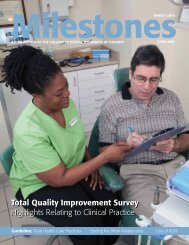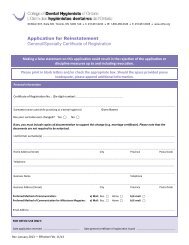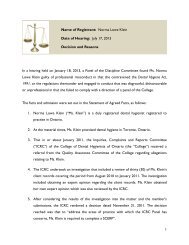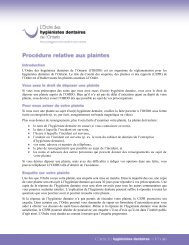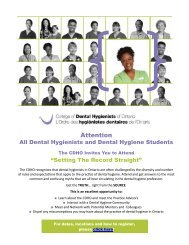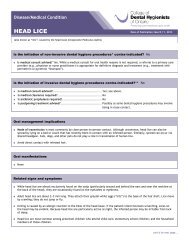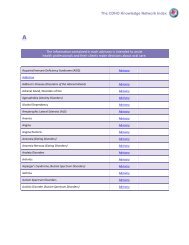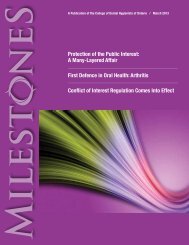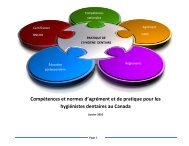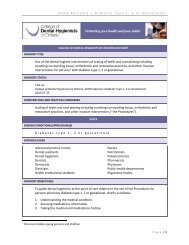CDHO Annual Report 2009 - College Of Dental Hygienists of Ontario
CDHO Annual Report 2009 - College Of Dental Hygienists of Ontario
CDHO Annual Report 2009 - College Of Dental Hygienists of Ontario
Create successful ePaper yourself
Turn your PDF publications into a flip-book with our unique Google optimized e-Paper software.
COLLEGE OF DENTAL HYGIENISTS OF ONTARIO<br />
NOTES TO FINANCIAL STATEMENTS<br />
DECEMBER 31, <strong>2009</strong><br />
1. Inception<br />
The <strong>College</strong> <strong>of</strong> <strong>Dental</strong> <strong>Hygienists</strong> <strong>of</strong> <strong>Ontario</strong> ("the <strong>College</strong>") was created on December 31, 1993<br />
pursuant to the proclamation <strong>of</strong> the Regulated Health Pr<strong>of</strong>essions Act, 1991 and the <strong>Dental</strong><br />
Hygiene Act, 1991. The legislation, generally, defines the practice <strong>of</strong> the Pr<strong>of</strong>ession <strong>of</strong> <strong>Dental</strong><br />
Hygiene in <strong>Ontario</strong> and provides for the election and appointment <strong>of</strong> individuals to the governing<br />
Council.<br />
2. Description <strong>of</strong> organization and income tax status<br />
The <strong>College</strong> is a not-for-pr<strong>of</strong>it organization whose stated objective is to regulate the practice <strong>of</strong><br />
dental hygiene in the interest <strong>of</strong> the overall health and safety <strong>of</strong> the public <strong>of</strong> <strong>Ontario</strong>. The<br />
<strong>College</strong> is exempt from income tax under section 149(1)(1) <strong>of</strong> the Income Tax Act. Registration<br />
remains valid so long as the <strong>College</strong> continues to fulfill the requirement <strong>of</strong> the Act and<br />
regulations in respect <strong>of</strong> non-pr<strong>of</strong>it organizations.<br />
3. Significant accounting policies<br />
Use <strong>of</strong> estimates<br />
The preparation <strong>of</strong> financial statements in accordance with generally accepted accounting<br />
principles requires management to make estimates and assumptions that affect the reported<br />
amounts <strong>of</strong> assets and liabilities and disclosure <strong>of</strong> contingent assets and liabilities at the balance<br />
sheet date and the reported amounts <strong>of</strong> revenue and expenses during the reporting period. Actual<br />
results could differ from those estimates.<br />
Revenue recognition<br />
The <strong>College</strong> follows the deferral method <strong>of</strong> accounting for registration and examination fees.<br />
Certificate <strong>of</strong> registration fees are recorded as revenue in the fiscal year to which they relate.<br />
Labour mobility funding is recognized as revenue in the year in which the related expenses are<br />
incurred.<br />
Investments<br />
Investments consisting <strong>of</strong> fixed income instruments and term deposits are designated on initial<br />
recognition as held-for-trading and recorded at fair value. Fair values are estimated using quoted<br />
market prices. The purchase and sale <strong>of</strong> investments are accounted for using trade-date<br />
accounting. Transaction costs associated with the acquisition and disposal <strong>of</strong> investments are<br />
expensed in the period incurred. Investment income includes interest income and realized and<br />
unrealized gains and losses. Bonds and term deposits with maturity dates within twelve months<br />
are classified as short-term investments.<br />
6<br />
<strong>CDHO</strong> <strong>Annual</strong> <strong>Report</strong> <strong>2009</strong> 33



